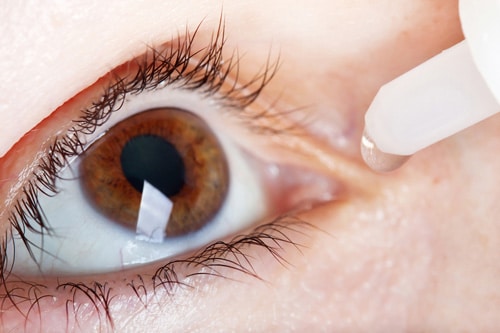We recently told you about how a drug company was targeting nursing home residents with a phony Alzheimer’s pill.
You’d think it would be difficult to sink lower than that. But Big Pharma has somehow managed it…
In yet another scandal, it’s been revealed that drug makers are ripping off people who are losing their eyesight.
More than 4 million Americans have glaucoma. In many cases, the only thing that can stop them from going blind is daily prescription eye drops that decrease pressure in the eye.1
Big Pharma has found a devious way to maximize their profits on eye drops. They make sure patients waste at least half of their medicine. The scam was recently exposed by the consumer watchdog group ProPublica.2
How do the drug companies do it?
They intentionally make the dispensers to create drops that are too large. The drops are often more than 50 microliters. This is over twice what the human eye can hold. The rest typically ends up dripping out of patients’ eyes and onto their cheeks.
This is by design. Big Pharma wants patients to waste them so they can charge more.3
The industry has known for decades that it’s possible to make droppers that avoid such waste.
As long ago as the 1990s, industry research showed that so-called “microdrops” of 16 microliters are just as effective as bigger drops at lowering eye pressure. In fact, smaller drops are better because they cause fewer side effects…like burning, stinging, itching, and dryness.
But the industry decided against tinkering with a proven (and unethical) business model.
Multiple studies in peer-reviewed publications such as the Journal of Ocular Pharmacology and Therapeutics and BMC Ophthalmology have found that most of each eye drop is wasted.4
“Smaller drops would be preferable to minimize systemic exposure and spilled or wasted medicine,” concluded the authors of one study.
Glaucoma drops are expensive. They cost as much as $300 a month. If the proper doses were used, prices could cut by more than half.
But Big Pharma has zero incentive to do this. In 2016, in the United States alone, drug companies raked in $3.4 billion from the sale of eye drops for glaucoma and dry eye.5
Stop Big Pharma From Robbing You Blind
Right now, there’s no indication that the FDA is going to step in and force drug companies to stop their shameless profiteering.
Dr. Bradley Schuster is a glaucoma specialist at Kaiser Permanente Hospital in Denver. He notes that patients can reduce waste by making sure they don’t “miss” when they apply the drops.
He recommends the following procedure to apply eye drops.
- Lay down flat with your face up.
- Gently pull your lower eyelid down to increase the amount of eyeball showing. Bring the bottle about an inch above your eye. Hold the bottle as vertical as possible. Gently squeeze until you see or feel the drop hit your eye.
- Once the drop is on the eye, do not blink. Instead, slowly close your eyes. Use your finger or a tissue to wipe any liquid that overflows. Gently press a finger to the tear duct in the corner of your eye near your nose.
- Leave your eye closed and your finger on the tear duct for two minutes. Studies have shown that it takes two full minutes for the drop to penetrate the surface of the eye. Pressure on the tear duct stops the drug from getting inside the nose. From there it can enter the bloodstream rapidly and cause side effects.
- If needed, repeat with the other eye.6
Some people use eyedropper guides to help them aim the drops and avoid waste. One well-reviewed device is the Autodrop Eyedropper Aid.
One more thing… The instructions on prescription eye drops often say to apply “one drop or two.” This is another effort to take your money. One drop is more than enough.7
Like this Article? Forward this article here or Share on Facebook.
References:
1 https://nei.nih.gov/news/pressreleases/032002
2 https://www.propublica.org/article/drug-companies-make-eyedrops-too-big-and-you-pay-for-the-waste
3 https://www.propublica.org/article/drug-companies-make-eyedrops-too-big-and-you-pay-for-the-waste
4 ttps://www.ncbi.nlm.nih.gov/pmc/articles/PMC4968848/
5 http://www.npr.org/sections/health-shots/2017/10/18/558358137/drug-companies-make-eyedrops-too-big-and-you-pay-for-the-waste
6 http://www.glaucoma.org/gleams/eyedrop-techniques-questions-and-answers-from-dr-bradley-schuster.php
7 http://www.glaucoma.org/treatment/glaucoma-eye-drops-suggestions-on-use.php

